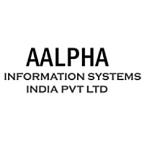How to Build an Attendance App: Features and Cost
When creating a technologically activated work setting, a sophisticated attendance control tool becomes critical. Not only is attendance control accountable for ensuring insight into staff movements, but it may also help ease enforcement. Different nations, territories, and areas all have their own set of administrative requirements for working hours, wages, and vacation days. Therefore, a digital attendance management system will keep track of the information above.
What Is the Concept of an Attendance Management System?
An attendance management system is any solution that assists in monitoring an employee’s time spent in the office. Interestingly, this would not have to be a software tool; legacy models of attendance control include paper registers, time clocks, and Excel-based spreadsheets.
However, with technologies advancing at a breakneck rate and businesses facing massive, distributed workforces, attendance tracking systems must keep up. This has resulted in dedicated time-tracking software for employees, ranging from on-premises solutions to cloud-based tools with advanced analytics and automated schedule configuration.
A cloud-based attendance management solution provides advantages such as increased availability, cost savings, and accessibility through devices and channels. Additionally, these tools are critical for modern organizations due to a variety of features.
Basic and Advanced Attendance Management System Features
Whichever attendance management device you select, on-premises or cloud-based, these four features can serve as the basis for employee time monitoring. That is why the checklist should have the following features:
This is a critical component of attendance control — workers should be able to clock in, record breaks, and clock out at the end of the workday via magnetic card readers or customized phone numbers. Card readers are advantageous since they exclude the possibility of theft or unauthorized clocking in.
Another area in which the attendance control scheme can be used is leave management. A missed day should not automatically register as “absent”; instead, the employee should be alerted to apply for leave or make any special attendance requests (such as half-day).
If the attendance monitoring scheme is integrated with payroll, salary is measured based on time worked, considering any accepted leaves or compensated time off. Moreover, bear in mind that this does not necessarily refer to daily payroll. A truly compelling piece of software can often accommodate hourly compensation and flexible payment options.
Creating and managing employee attendance records is a vital HR function of every company. Essential report generation, such as hours worked, overtime, and missed days, should be exportable.
Biometric participation is ideal if you have a great staff that must adhere to strict clock-in and clock-out schedules. For instance, a contact center can operate on a nine-hour shift and hire more than a hundred agents. Biometric technology reduces the possibility of theft by authorizing participation using the employee’s fingerprint or some form of personal recognition.
Frequently, an employee will fail to clock in the next lunch or will miss clocking out in a hurry to exit the office at the end of the workday. More importantly, managers/employees will be notified about these abnormalities via automated warnings, requiring urgent action.
An attendance control scheme can also be synced with digital calendars such as Google Calendar, Outlook, and the like. This notifies the whole team of a person’s availability. More importantly, calendar integrations are beneficial for remote teams, as they enable you to monitor a member’s attendance via a shared calendar easily.
A cloud-based attendance management framework can be accessed from almost any laptop. Moreover, this often suggests browser convergence, which enables the device to be used without installing an application. Additionally, a mobile app can help increase the efficiency of field workers and remote employees by allowing accurate attendance capture from any position.
Self-service has the potential to revolutionize your attendance control scheme. Moreover, employees no longer need to clock in at the workplace doorway; they may now sit at their desks (on-premises or remote) and log in through an app/browser. Leave demands, performance record adjustments, and self-compliance will also be completed without human resources or a boss.
Advanced analytics-enabled attendance control solutions have granular insight into attendance trends, identifying those that constantly work overtime or outside of regular hours. Moreover, these types of behaviors should be appropriately noted and corrected, ensuring that the workplace maintains optimum efficiency standards.
The Cost of Developing a Mobile Attendance App
When it comes to hiring software developers for your company, the cost is a significant factor. Its scale and sophistication determine the expense of developing an attendance app. Apart from that, the developers’ geographic position and the number of hours spent developing the software play a significant role in determining the app development cost. Depending on the zone,
- Developers based in the United States earn between $150 to $250 every hour.
- Developers working in Europe earn between $85 and $150 per hour.
- More importantly, developers in India earn between $30 to $50 per hour.
Depending on the segments to be created, the actual development cost will vary due to the following factors.
- Documentation technique
- The layout of the UI/UX
- Creation of both the front-end and back-end
- MVP launch
- Examining
After measuring the overhead operating costs, we can estimate the total expense of a mobile attendance app. A simple app with minimal functionality can cost between $10,000 and $25,000 for a single platform, and costs can rise to $30,000 if the app is feature-rich and adheres to high-quality requirements.
Final thoughts
Adopting automated attendance control solutions will revolutionize the way your staff is managed. These technologies’ features and functionalities are vital to the workers’ daily jobs, and computerized applications eliminate mistakes that may result in month-end hassles and regulatory issues.
If you have any queries then feel free to contact us today!!
Originally published at https://www.aalpha.net on April 28, 2021.
